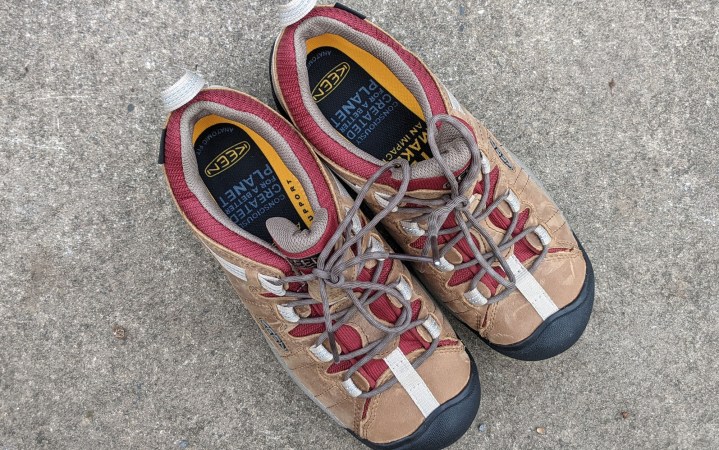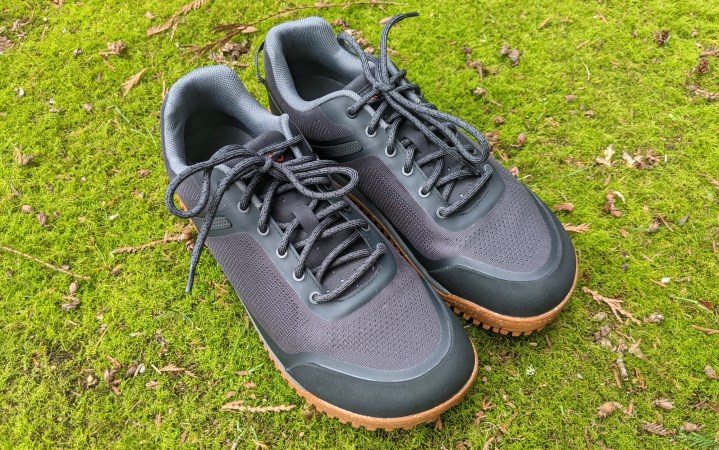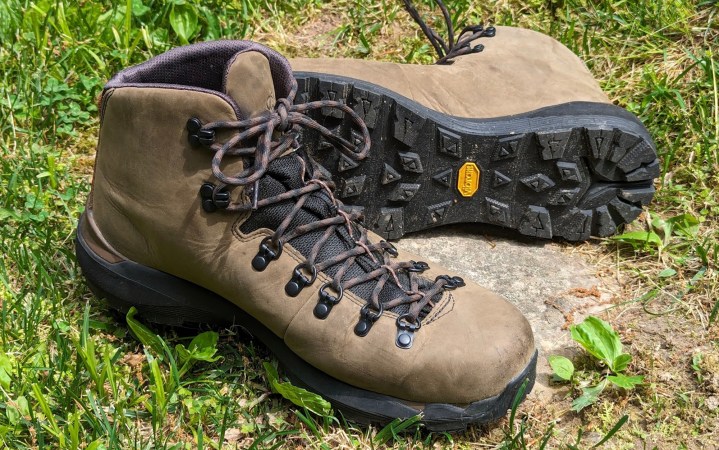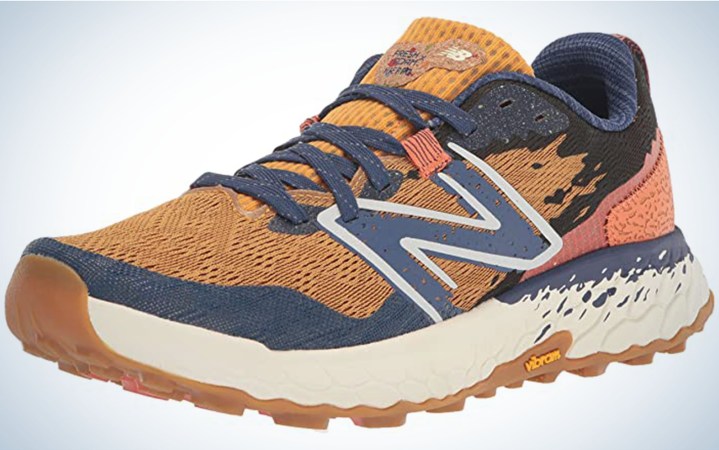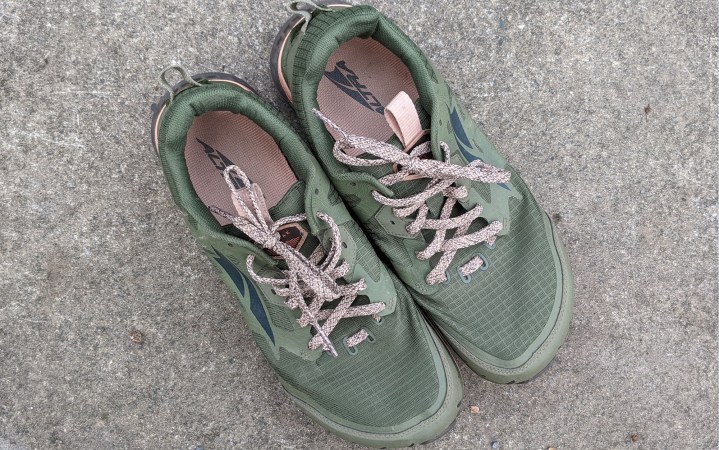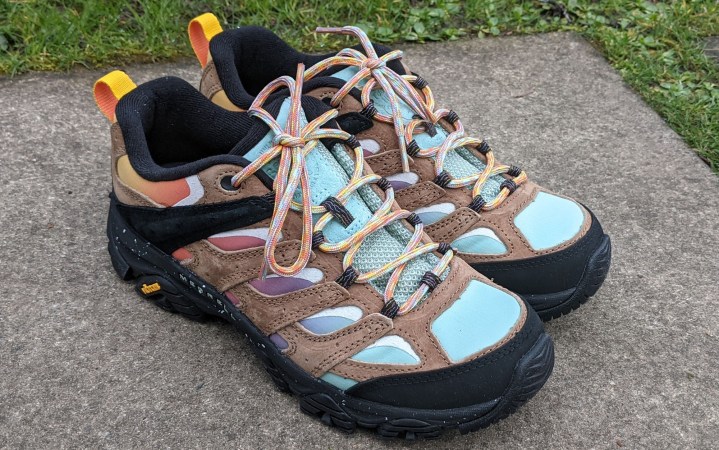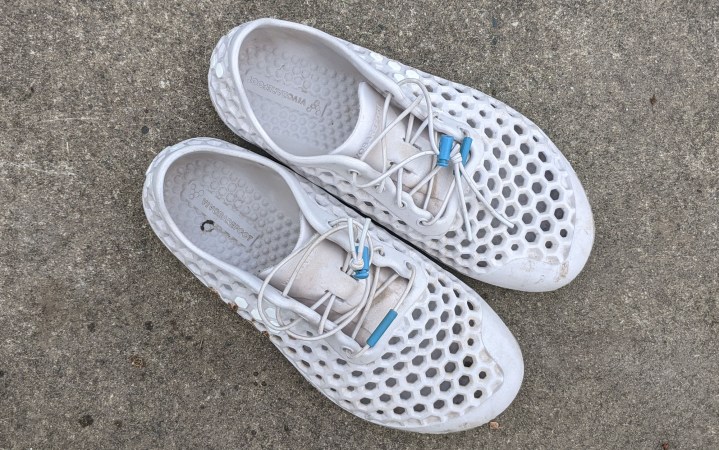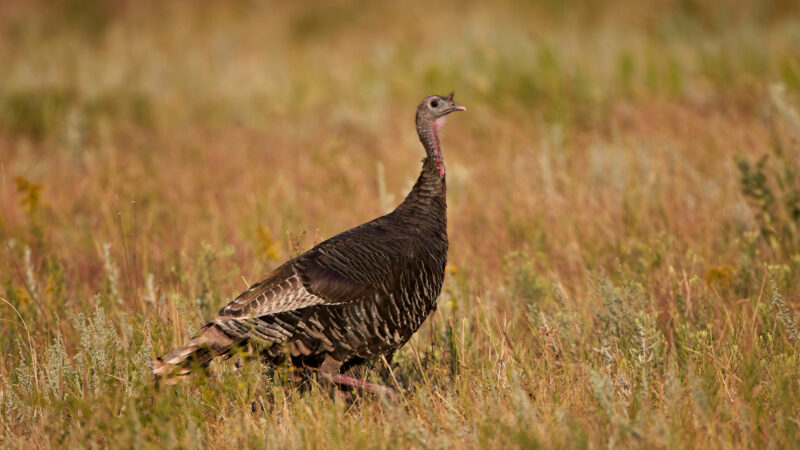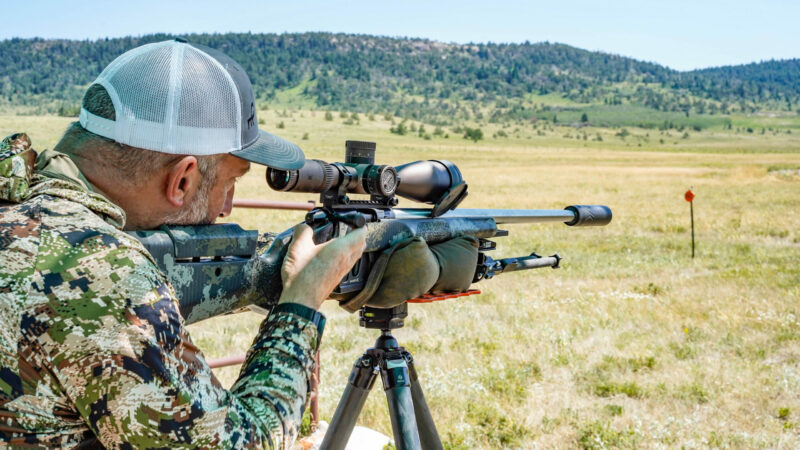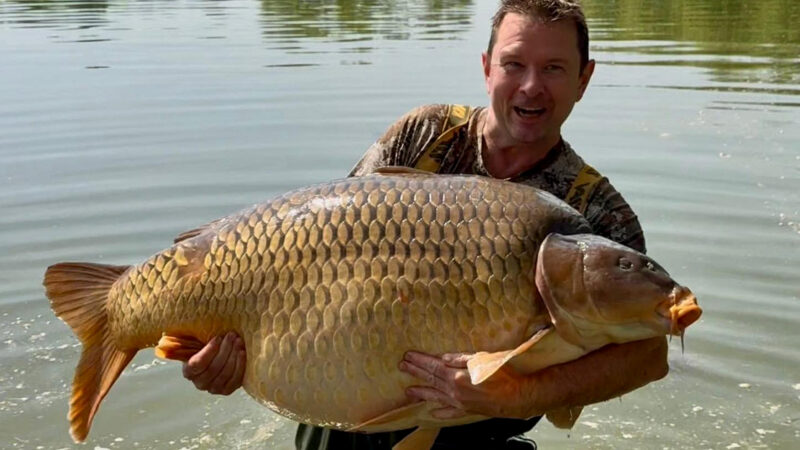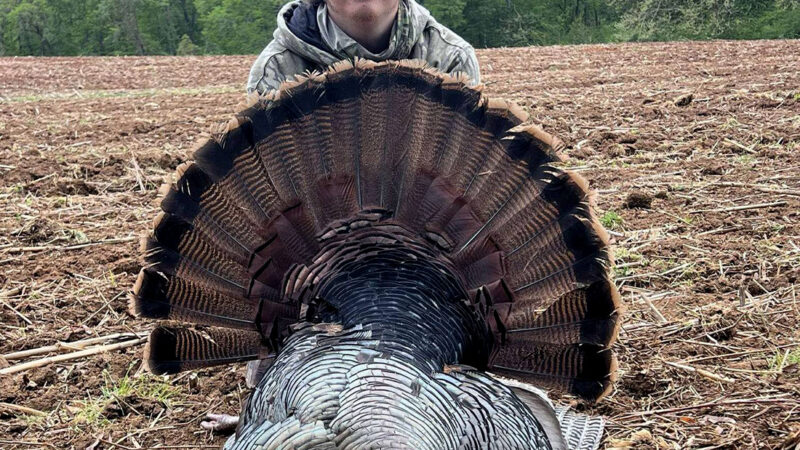The Best Hiking Shoes for Wide Feet of 2024, Tested and Reviewed
We may earn revenue from the products available on this page and participate in affiliate programs. Learn More ›
For plenty of hikers, there are almost too many shoe options available; but if you have wide feet? The options are a lot more limited. Worse, there are plenty of so-called wide shoes that are D or E width in name only. To help you find the best hiking shoes for wide feet, I took a look at some of the most popular models available and solicited feedback from hikers with wider than average feet.
- Best Overall Wide: KEEN Targhee
- Best Overall Double Wide: Xero Ridgeway
- Best Boots: Danner Mountain 600 EVO
- Most Width Options: New Balance Fresh Foam Hierro
- Best for Flat Feet: Altra Lone Peak
- Best Arch Support: Merrell Moab
- Best Water Shoes: Vivobarefoot Ultra Bloom III
Testing the Best Hiking Shoes for Wide Feet
OL has been testing the best hiking shoes and the best hiking boots for years, but to assess what hiking shoes work best for individuals with wide feet, we needed to find the right tester to give us feedback on what hiking shoes were truly wide width and which were wide width in name only. Fortunately for me, I have an avid hiker that wears wide-width shoes in-house: my sister, Diane.
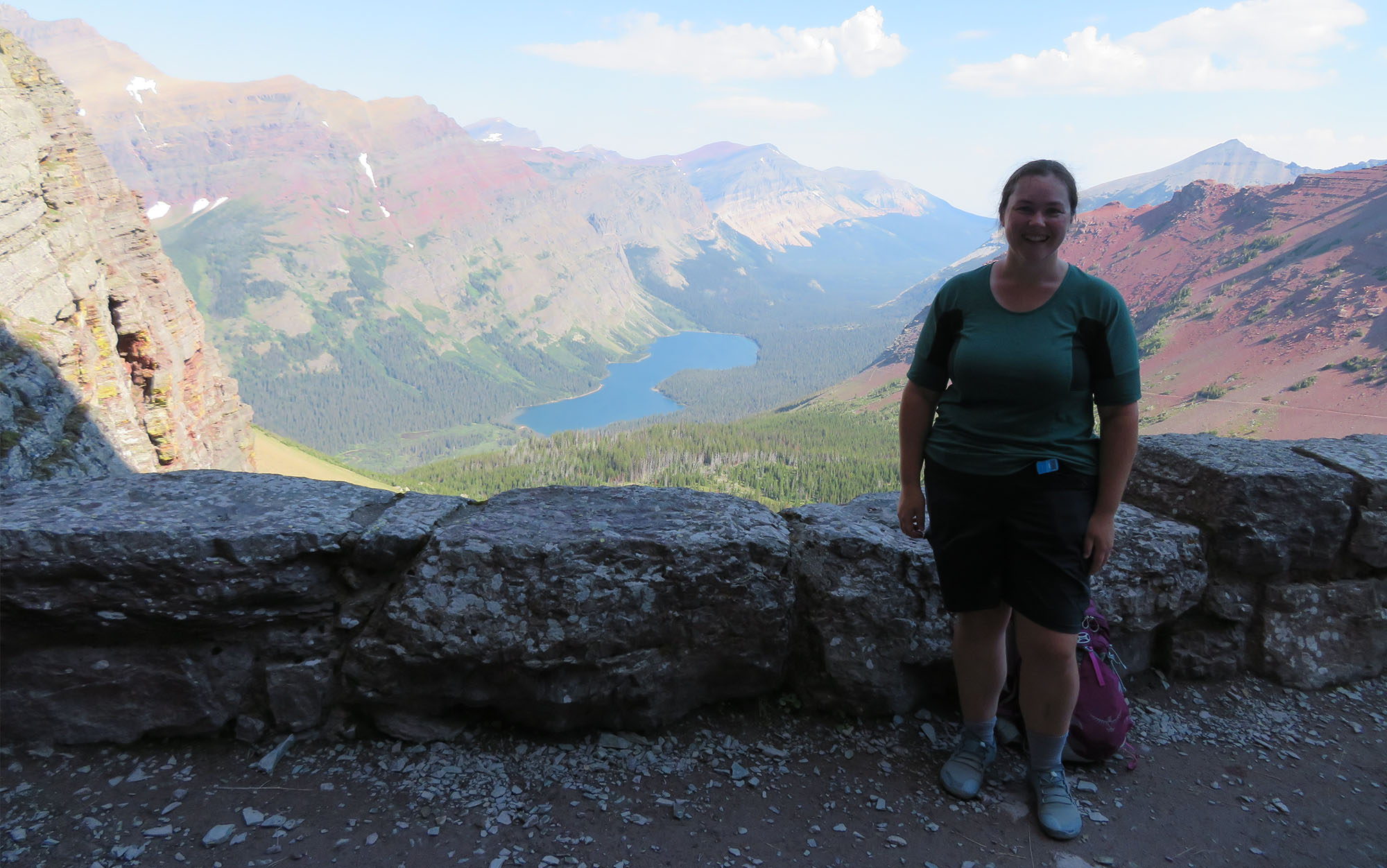
She describes her foot as a D width (or sometimes “hobbit feet”). Like many women, she usually goes straight to men’s shoes, as these are built at a D width to start.
I called in wide-width shoes from manufacturers with a reputation for excelling in this area, including Keen and Merrell, and also acquired other options that are often recommended for individuals with wider feet. My sister provided feedback on comparative fit across the foot. In updates to this story, I have also solicited feedback from other individuals with D, E, and EE width feet, including an avid hiker and walker in her 70s and a thru-hiker.
| Shoe | Buy It | Available Sizes | Available Widths | Relative Width | Arch Support | Toe Box | |
| Altra Lone Peak | Men’s | Women’s | Men’s: 7-16 Women’s: 5.5‑12 |
Men’s: N/A Women’s: N/A |
Runs wide | Minimal | Wide |
| Danner Mountain 600 EVO | Men’s | Women’s | Men’s: 8-14 Women’s: 5-11 |
Men’s: EE Women’s: D |
Runs wide | Moderate | Medium |
| Freet Tundra | Men’s | Women’s | Men’s: 7-13 Women’s: 6‑11.5 |
Men’s: N/A Women’s: N/A |
Runs extra wide | None | Wide |
| KEEN Targhee | Men’s | Women’s | Men’s: 7-17 Women’s: 5‑11 |
Men’s: EE Women’s: D |
Runs wide | Low | Medium |
| Merrell Moab | Men’s | Women’s | Men’s: 7-15 Women’s: 5‑13 |
Men’s: EE Women’s: D |
Runs true to size | Medium | Narrow |
| New Balance Fresh Foam Hierro | Men’s | Women’s | Men’s: 7-17 Women’s: 5‑12 |
Men’s: EE-4E Women’s: D-2E |
Runs true to size | Medium | Narrow |
| Vivobarefoot Ultra Bloom III | Men’s | Women’s | Men’s: 7-15 Women’s: 5.5‑11.5 |
Men’s: N/A Women’s: N/A |
Runs extra wide | None | Wide |
| Xero Ridgeway | Men’s | Women’s | Men’s: 6.5-15 Women’s: 5-12 |
Men’s: N/A Women’s: N/A |
Runs extra wide | None | Wide |
| Xero Scrambler Mid | Men’s | Women’s | Men’s: 6.5-15 Women’s: 5-12 |
Men’s: N/A Women’s: N/A |
Runs wide | None | Wide |
Sizing Shoes for Wide Feet
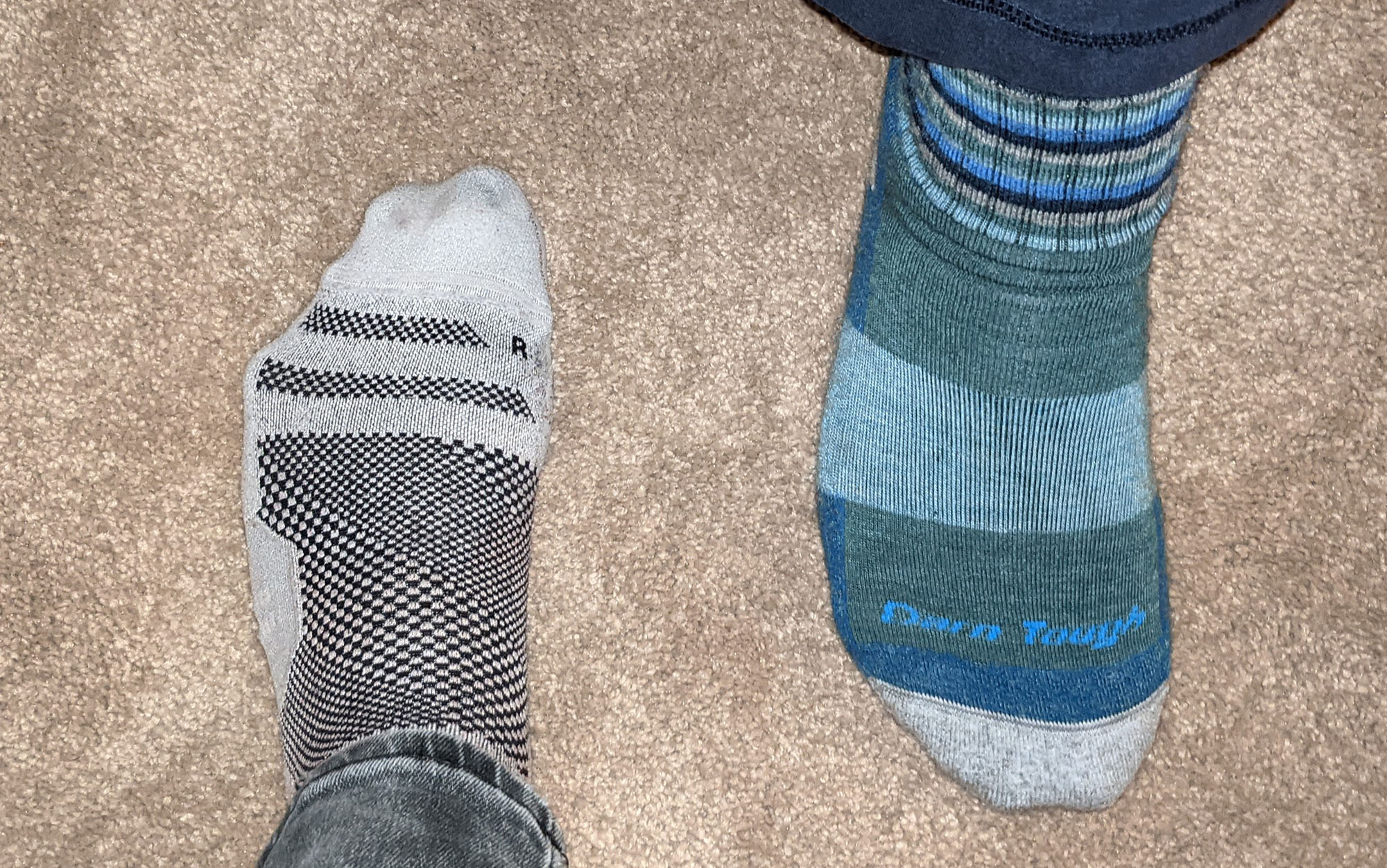
If you’re looking to purchase your first pair of hiking shoes for wide feet, you’ll first want to figure out exactly how wide you need your shoes to be. Shoes are typically rated for width using a letter grade system as follows:
| Standard | Wide | Extra Wide | |
| Women’s | B | D | 2E |
| Men’s | D | 2E | 4E |
While it’s always a best practice to go to a shoe store to have your foot measured (preferably at the end of the day), you can also do it at home using New Balance’s size finder.
The Best Hiking Shoes for Wide Feet: Reviews & Recommendations
Best Overall Wide: KEEN Targhee
Key Features
- Sizes: Men’s 7-17; women’s 5-11
- Widths: D-E
- Height: Low, mid, and high
Pros
- Even their regular model is wider than average hiking shoes
Cons
- Wide sizes only available for a select number of shoes
The KEEN Targhee’s have a reputation for running wide that held up during testing. Even their standard width hiking shoe felt wider than other brands’ wide-width shoes. In fact, they were wide enough that if you are between a D and E width for women (or between an E or EE for men), their wide-width models should go to the top of your list.
Part of what gives this shoe a wide fit is its toebox. While it has the tapered fit at the toe that is common with traditional hiking shoes and boots, it begins that taper further up the forefoot, leaving extra space around the ball of the foot, typically one of the widest parts.
Best Overall Double Wide: Xero Ridgeway
Key Features
- Sizes: Men’s 6.5-15; women’s 5-12
- Widths: N/A
- Height: Low and high
Pros
- No arch support is a better fit for flatter feet
Cons
- One size only
- Zero-drop design may take a few weeks for some individuals to adjust to
Barefoot-style shoes come up again and again when searching for the best hiking shoes for wide feet. Which makes sense, as barefoot-style shoes are typically wider by design, especially at the forefoot. Many individuals with wide or extra wide feet also have flatter arches than the norm, which can make the arch support found in conventional hiking shoes downright uncomfortable. Barefoot-style shoes have no arch support whatsoever. The sticking point for hikers with wide feet has always been that there is usually only one width offered (equivalent to a D for women and an E for men) and the low stack height and cushioning can take some adjustment.
Read Next: The Best Barefoot Shoes
The Xero Ridgeway stood out among the barefoot shoes for its width. I had several individuals try on the the women’s version of the shoe and all agreed that this shoe is the equivalent of double width, making the women’s version an E and the men’s version a EE. It also has a more robust stack height (the amount of material in between the sole and the base of the foot) than other classic barefoot-style shoes, making it an easier transition for individuals curious to try it.
Best Boots: Danner Mountain 600 EVO
Key Features
- Sizes: Men’s 8-14; women’s 5-11
- Widths: D-2E
- Height: High
Pros
- Wider than a typical wide
- Spacious interior
- Wide toebox
- Little to no break-in time required
- Option to resole them through Danner Recrafting
Cons
- A little pricey
My tester for these hiking boots described these are somewhere between a wide and a double wide. Whereas in most so-called wide hiking boots his toes are pressing against the sides, the tester reported the Danner Mountain 600 EVO
“felt like they were made for my feet.” That’s because not only are these boots wider than a typical wide, they also have a wider toebox and larger interior volume. Even better, despite being a leather boot, the Danner Mountain 600 EVO needed next to no break-in time.
For this tester, the Danner Mountain 600 EVO didn’t have enough arch support (something he plans to resolve with one of the best insoles for hiking).
Most Width Options: New Balance Fresh Foam Hierro
Key Features
- Sizes: Men’s 7-17; women’s 5-12
- Widths: D-4E
- Height: Low and mid
Pros
- Largest range of sizes of anything I found
- Comparatively affordable
Cons
- Less durable than traditional hikers
One issue that came up time again while searching out wide-width hiking footwear to test is that there just aren’t that many companies making anything extending past an E width for men or a D width for women. The exception is New Balance, which has numerous models that go out to as wide as 4E, ensuring that just about anyone can find something that will fit. While their shoes are typically designed for more frontcountry use than backcountry, there are a few trail-ready models, including the Hierro.
One thing to note is that because these shoes are trail runners rather than traditional hikers, they will have a shorter lifespan—expect to switch these out every five hundred miles or so, sooner if you’re backpacking with an unusually heavy load in your shoes.
Best for Flat Feet: Altra Lone Peak
Key Features
- Sizes: Men’s 7-16; women’s 5.5-12
- Widths: N/A (narrower models available)
- Height: Low, mid, and high
Pros
- Wide toe box
- No arch support
Cons
- Less supportive structure than traditional trail runners or hiking shoes
- Only lasts about 300 miles
The ample width at the instep and forefoot is no small part of the popularity of the Altra Lone Peak, the most popular choice for thru-hiking and OL‘s pick for the best hiking shoe. The heel of this shoe is similar to traditional-width shoes, locking most people’s feet into place (important for preventing rolled ankles). But as you extend down the instep, the shoe’s shape starts to widen until you reach the toebox, which is wide enough to splay your toes. If your heel is locking into place fine in regular-width hiking shoes, but there is undue pressure on your forefoot, this will be a benefit.
Many individuals with wide feet also have lower arches, which can make the moderate arch support of most trail running shoes irritating. The Altra Lone Peak does not have any arch support, which can be more comfortable for some individuals.
Read our full review of the Altra Lone Peak 6 here.
Best Arch Support: Merrell Moab
Key Features
- Sizes: Men’s 7-15; women’s 5-13
- Widths: D-E
- Height: Low, mid, and high
Pros
- Great colors as part of their Unlikely Hiker collection
- Large interior volume
- Higher arch support will appeal to some individuals
Cons
- Less wide than other models I looked at
One downside to having wide-width feet is that you don’t always have access to the same variety of colors and styles available in regular-width shoes. Fortunately, Merrell’s collaboration with Unlikely Hikers has wide-shoe options available in all cuts and sizes, making it much easier to find the right fit.
Testers noted that the Merrell wide was similar to the standard KEEN fit and that this was most noticeable at the instep. However, this may be due to the more significant arch support in this shoe compared to others tested. One thing that testers did appreciate about this shoe was the comparatively large volume of the toebox. The top of some other shoes presses down against the ball of the foot, constricting movement (a problem frequently solved by removing the insole). But testers had plenty of room to move toes around in the Moabs.
Best Water Shoes: Vivobarefoot Ultra Bloom III
Key Features
- Sizes: Men’s 7-15; women’s 5.5-11.5
- Widths: N/A
- Height: Low
Pros
- Extremely wide
- Lightweight
Cons
- Not an all-day hiking shoe
During testing for the best water shoes for hiking, I noted that the Vivobarefoot Ultra Bloom was really wide. Not only was it wider than the other shoes in that test, but it was also significantly wider than the other Vivobarefoot shoes I looked at for our test of the best minimalist shoes for hiking and trail running. It’s possibly the widest shoe I’ve ever tried.
While the Vivobarefoot Ultra Bloom is not a suitable choice for long hikes due to its inadequate traction, it is a serviceable shoe for shorter, easy hikes and a great casual water shoe with excellent drainage and stability. The other unique feature of the Vivobarefoot Ultra Bloom III is its eco bonafides. The upper is foam derived from algae, which was harvested from waterways around the world where an excess in algae (which can occur as a result of both rising temperatures and agricultural runoff) has the potential to result in toxins entering waterways.
How to Choose the Best Hiking Shoes for Wide Feet
Build and Quality
While finding the correct width hiking shoe is essential for having a positive experience in the outdoors, you should also consider the level of ankle protection you are looking for, your preferred heel drop, and whether you value breathability over waterproofness or vice versa.
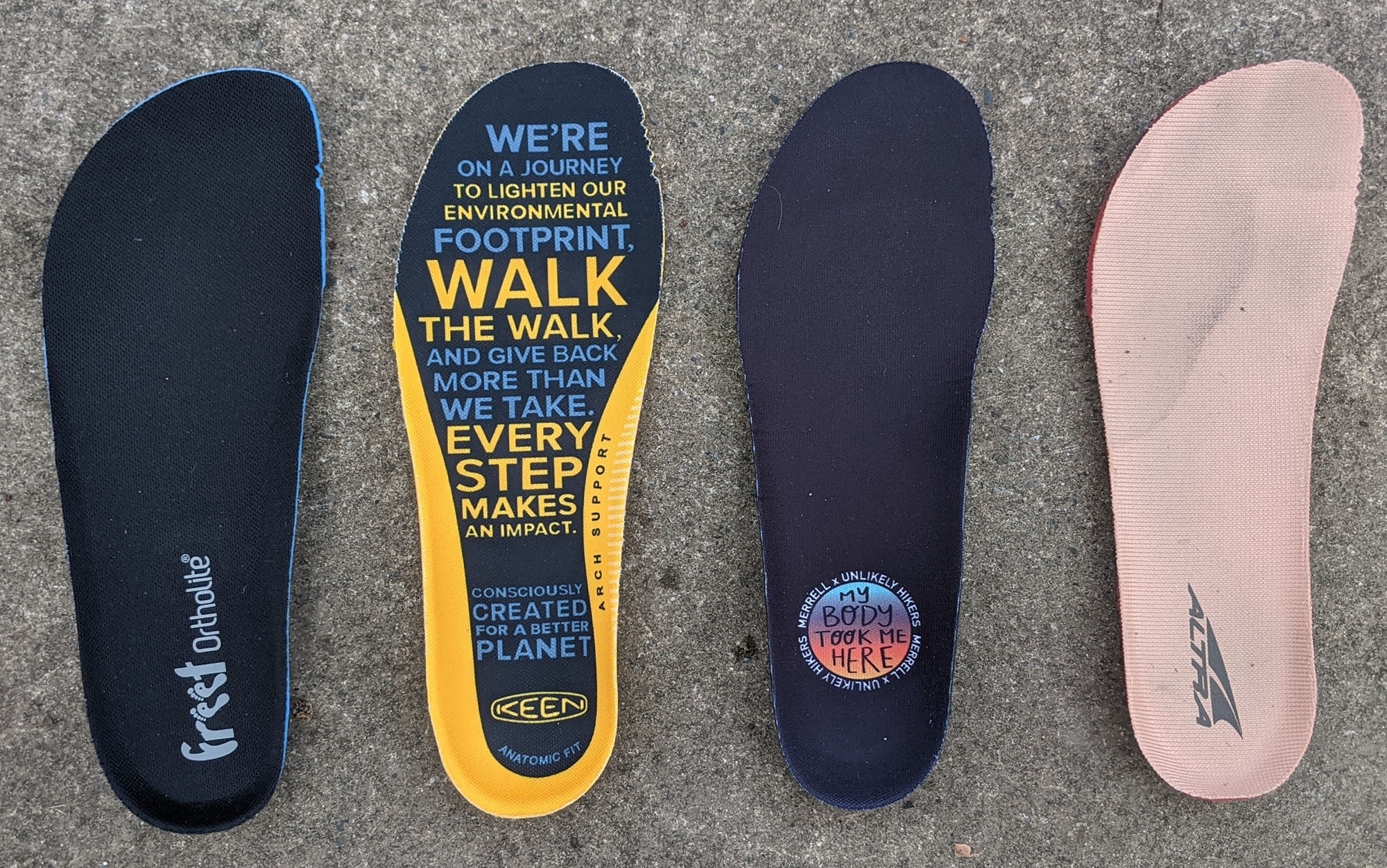
Tip for Checking Fit
One way to check whether the width of your shoe is the issue (rather than the overall size or shape) is to take out the insole. During testing, I noticed that several of the models I looked at had narrower insoles than the base of the shoe would have otherwise supported. If your shoe is more comfortable without the insole, it’s worth looking for a custom insole that reduces both the overall bulk on the inside of your shoe or allows for a wider foot to fit inside.
Foot Volume
While talking through issues of fit and comfort with my testers, it became clear that there was a secondary issue that individuals with wide feet are also dealing with, which is the interior volume of the shoe. I have noted above that a shoe had a comparatively low or high interior volume, but one trick to creating more interior space in a shoe is to wear it without the insole. While most insoles are designed to maximize comfort and support, having enough space for your foot on the inside of your shoe is more important.
Return Policy
One problem with having a wide foot is that a lot of times, even when the best boot brands are making wide-width hiking shoes, they aren’t available in stores to test out before you buy. Given the surprising variability in widths found in regular-width and wide-width hiking shoes, you may benefit from ordering a number of likely candidates online, and then returning the ones that aren’t right for you. Check for a generous, easy-to-use return policy before you buy.
FAQs
If you’re feeling sideways pressure along your mid and forefoot, particularly at the ball of the foot, that’s a good indication that your hiking boot or shoe is not wide enough. Your hiking boot should be locked in at the heel, which will help prevent your ankle from rolling, but feeling undue pressure anywhere along the length of your foot is a sign that a wider shoe might be a better fit.
No, hiking boots do not stretch. If your hiking boot feels more snug on your foot than is comfortable, you should size up or choose a wider-width option.
Hiking shoes should be locked in at the heel, but then loosen up as the foot moves forward. If the balls of your feet feel constrained or your toes are unable to splay (inhibiting shock absorption), then the shoe’s volume is too small for your foot. One option to increase the volume of the shoe is to take out the insole.
You should have about a 1/2-inch of length between the end of your toes and the front of your boot, and there should be enough sideways width that you can wriggle your toes. Keep in mind that your feet also expand as the mileage and years rack up, due to a number of factors, including loosening ligaments and loss of fatty padding on the soles.
Trail runners and hiking shoes both cost in the neighborhood of $100 and $200.
Final Thoughts
Whether you’re backpacking, trail running, or just heading out for a casual hike, choosing the best hiking shoes for wide feet can vastly improve your experience. We’ve rounded up our picks based on years of experience hiking, backpacking, and hunting, as well as input from individuals with wide-width feet.
- Best Overall Wide: KEEN Targhee
- Best Overall Double Wide: Xero Ridgeway
- Best Boots: Danner Mountain 600 EVO
- Most Width Options: New Balance Fresh Foam Hierro
- Best for Flat Feet: Altra Lone Peak
- Best Arch Support: Merrell Moab
- Best Water Shoes: Vivobarefoot Ultra Bloom III
The post The Best Hiking Shoes for Wide Feet of 2024, Tested and Reviewed appeared first on Outdoor Life.
Source: https://www.outdoorlife.com/gear/best-hiking-shoes-for-wide-feet/
